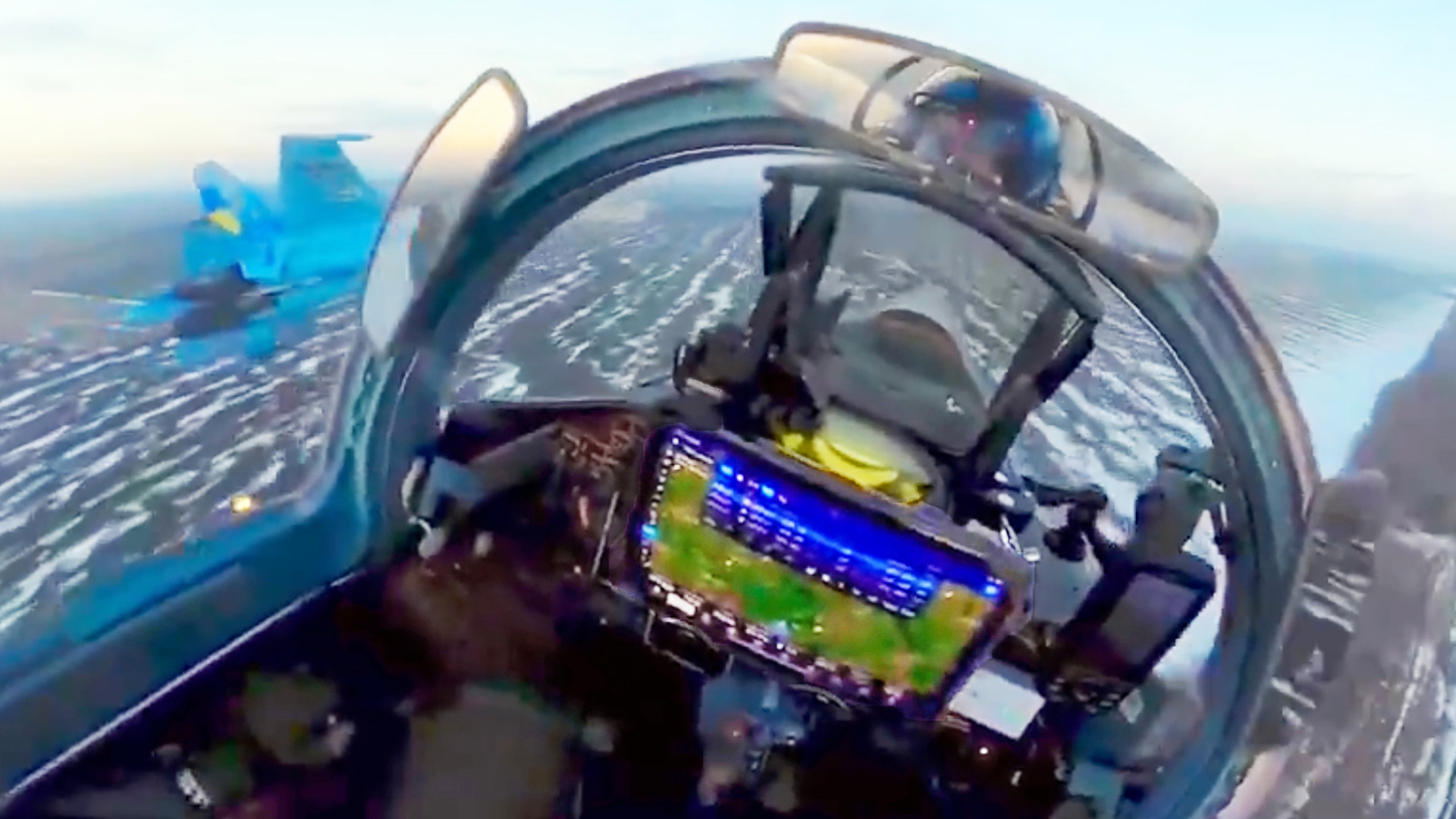The Ukrainian Air Force is using iPads, or similar tablets in the cockpits of its Soviet-era jets to enable rapid integration of modern Western air-to-ground weapons — something that TWZ predicted back in 2022. This has been confirmed by Undersecretary of Defense for Acquisition and Sustainment Dr. William LaPlante. While many questions remain about the tablet and how it exactly works, there’s now footage showing it fitted in cockpits during combat (or at least live-fire training) missions.

LaPlante was speaking at the Center for Strategic and International Studies (CSIS) think tank’s annual Global Security Forum yesterday, April 24, 2024. When asked to provide examples of successful programs that rapidly developed capabilities and got them into the hands of the military, one example he chose was the tablets in Ukrainian fighter cockpits:
“There’s also a series of … we call it ‘air-to-ground,’ it’s what we call it euphemistically … think about the aircraft that the Ukrainians have, and not even the F-16s, but they have a lot of the Russian and Soviet-era aircraft. Working with the Ukrainians, we’ve been able to take many Western weapons and get them to work on their aircraft where it’s basically controlled by an iPad by the pilot. And they’re flying it in conflict like a week after we get it to him.”
LaPlante didn’t provide further details, but it’s noteworthy that a video recently released by the Ukrainian Air Force shows a Su-27 Flanker fitted with exactly this type of system — possibly an iPad, but perhaps also another kind of commercially available tablet.
The video in question shows the Su-27 employing U.S.-supplied AGM-88 High-speed Anti-Radiation Missiles (HARMs), which have provided these fighters, as well as Ukrainian MiG-29 Fulcrums with a suppression and destruction of enemy air defense (SEAD/DEAD) capability.
In one portion of the video, screen-capped below, the tablet can be seen to display a navigational map, as well as other, undiscernible data.
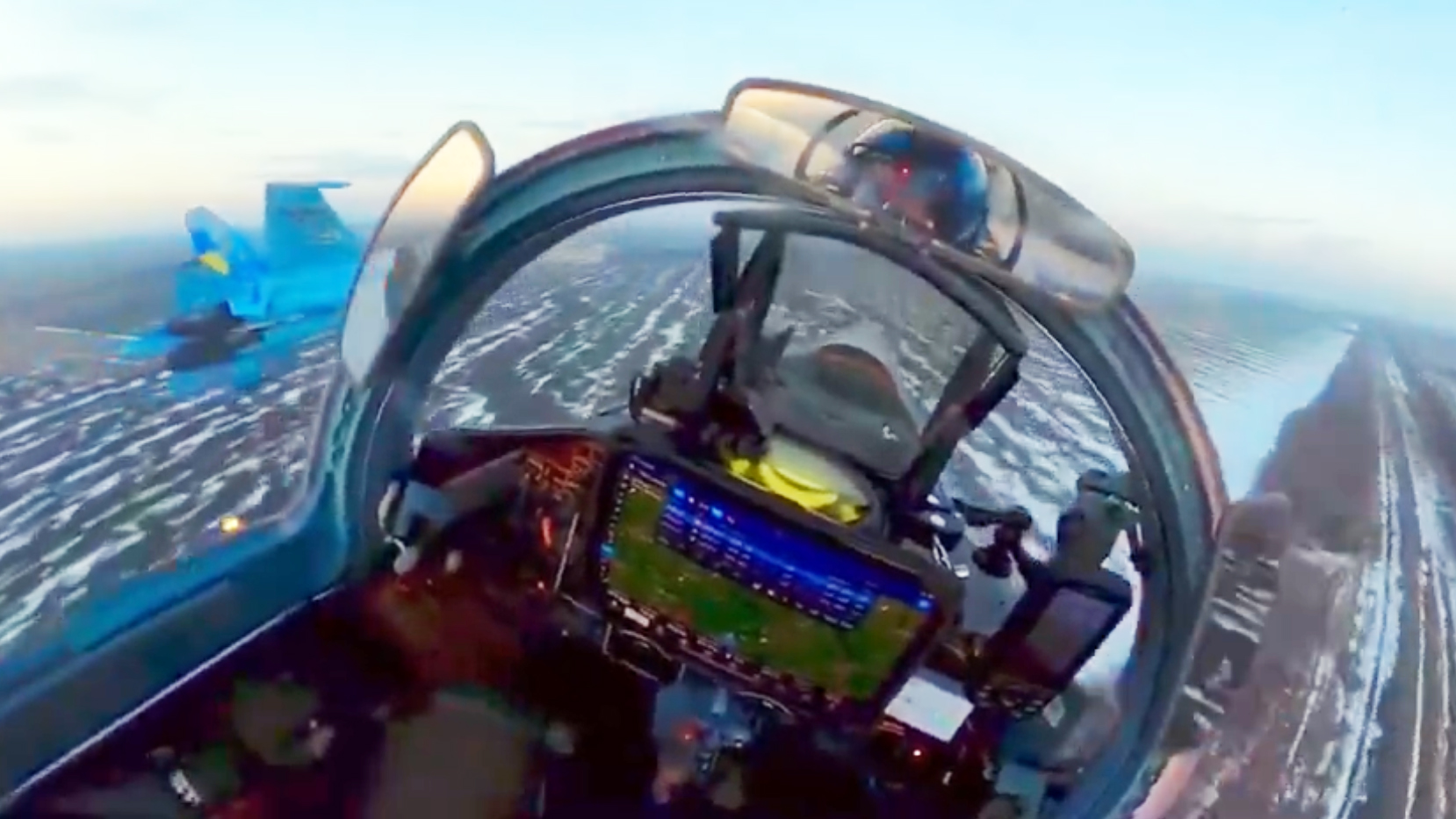
The fact that the size of the tablet, attached horizontally, blocks out key instruments in the cockpit suggests that it displays a variety of flight-critical data, as well as being used for navigation.
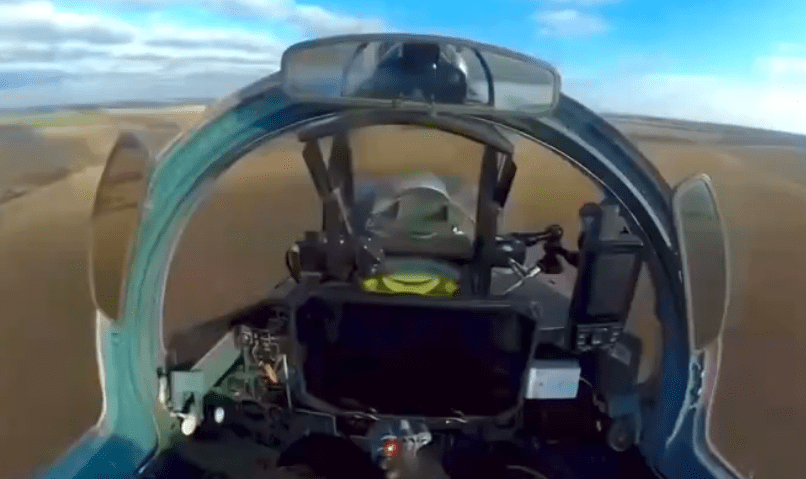
Based on LaPlante’s remarks, it seems that the same tablet is also vital for the employment of several Western-supplied air-to-ground weapons. After HARM was integrated, Soviet-era Ukrainian fighters also began using Joint Direct Attack Munition-Extended Range (JDAM-ER) precision-guided bombs. They have since added French-supplied Hammer rocket-assisted bombs to their inventory lists. The United Kingdom has now also pledged to send dual-mode Paveway IV precision-guided bombs, though it is unknown at present what aircraft will carry them.
In the case of HARM, JDAM-ER, and Hammer, it has been assumed that they are likely being employed against targets of known coordinates, with these being pre-programmed on the flight line before the jet takes off. The pilot then has to navigate to the area, perhaps also aided by a tablet with GPS navigation, and then release the weapon, which is guided to the target using its GPS-aided inertial navigation system.
Using HARM is a little more involved, however, due to the fact that the target might present itself only fleetingly and may well be highly mobile (especially in the case of battlefield air defense systems). At the same time, the nature of the SEAD/DEAD means that the pilot may need to respond to ‘pop-up’ targets as and when they appear, for example when a particular air defense radar is switched on.

Most critically, however, in the case of Ukraine, is the fact that its Soviet-era fighters lack the kinds of data bus interfaces that would ensure seamless compatibility with any of these three weapons.
This is something we have discussed in the past and we also concluded that a tablet was a likely part of the solution.
Furthermore, an Su-27 or MiG-29 using JDAM-ER relies not only on a tablet in the cockpit, but also on specialized pylons on which the weapons are carried. As we have noted in the past, these unusual pylons may not only provide critical GPS information to the weapon prior to release, but they could also incorporate some kind of electronic support measures (ESM) — passive detection gear that can identify and even geolocate threat emitters.
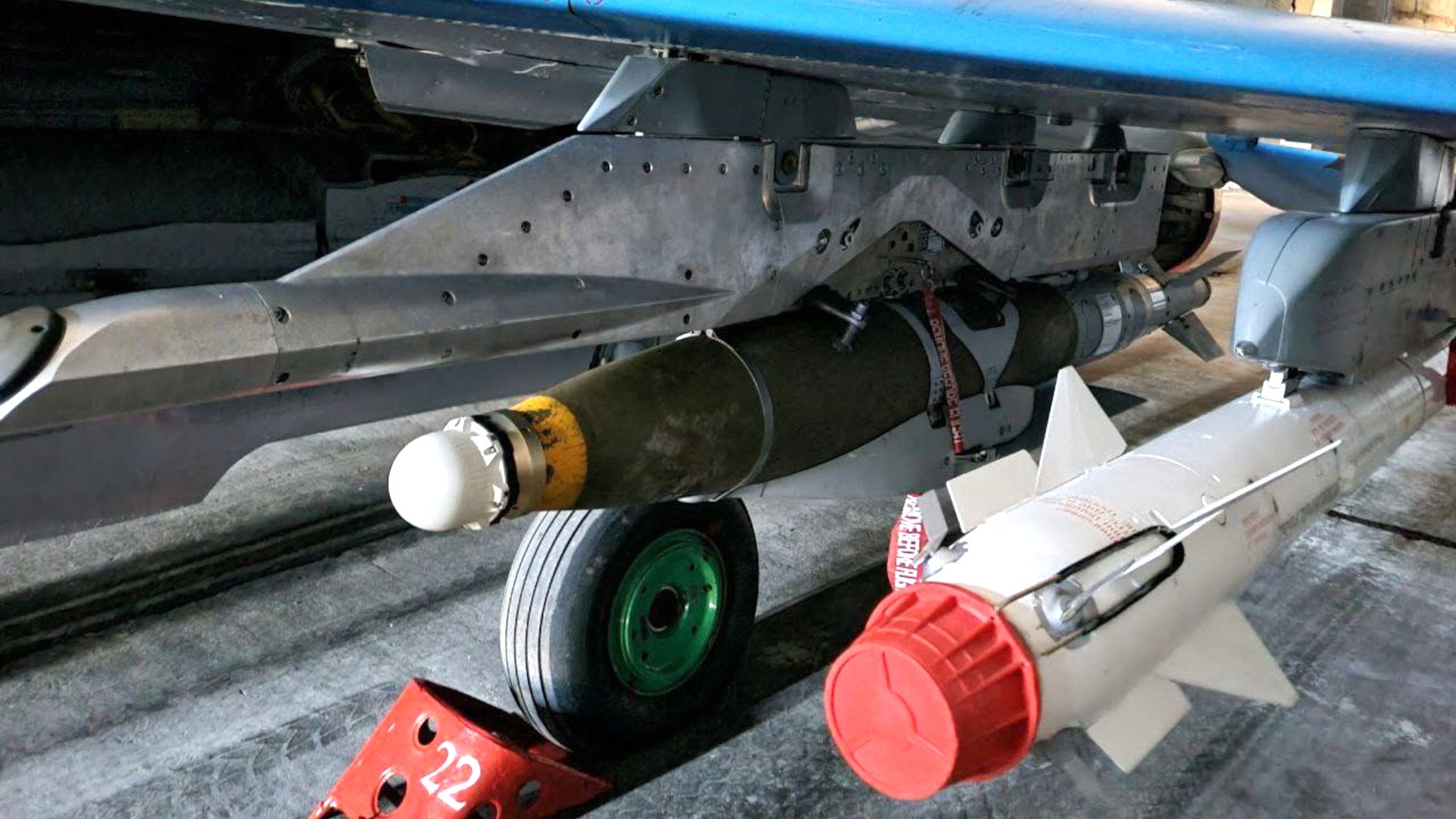
While one ESM receiver in the pylon (or elsewhere on the jet, for that matter) would be able to provide general awareness of a radar threat’s presence, it wouldn’t be able to determine its range. However, two or more such receivers could allow that same emitter to be triangulated. This would allow the location to be determined, which could, in turn, be presented on the map shown on the cockpit tablet.
The pilot would then be much better able to use JDAM-ER to prosecute targets of opportunity. The same may well apply to the Hammer, which appears to be launched from these same pylons.
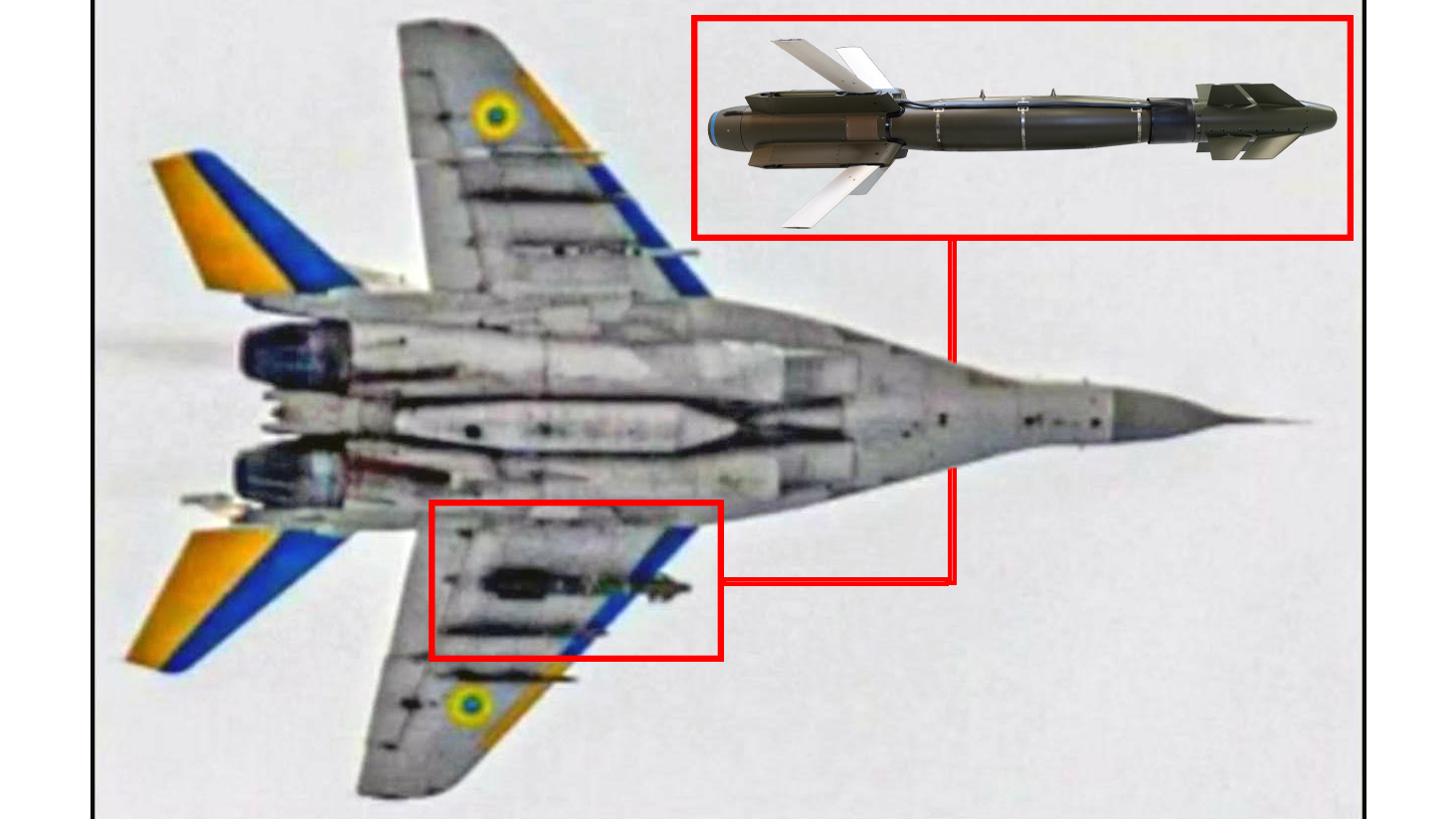
HARM, on the other hand, has not been seen fitted to the special pylons.
Nevertheless, a cockpit tablet could provide a kind of visualized radar warning receiver for Ukrainian fighter pilots conducting Wild Weasel missions. It could present data acquired by some other kind of onboard ESM, or more rudimentary information from the seeker head on the HARMs themselves. In this way, threat data could overlayed on a map, with the pilot then using this to prosecute those targets or otherwise avoid the highest-threat areas. Any of this kind of capability would enhance the survivability of the jets and the efficacy of the air-to-ground weapons they launch.
At the very least, the tablet could allow for basic weapons employment, together with the GPS-generated moving map.
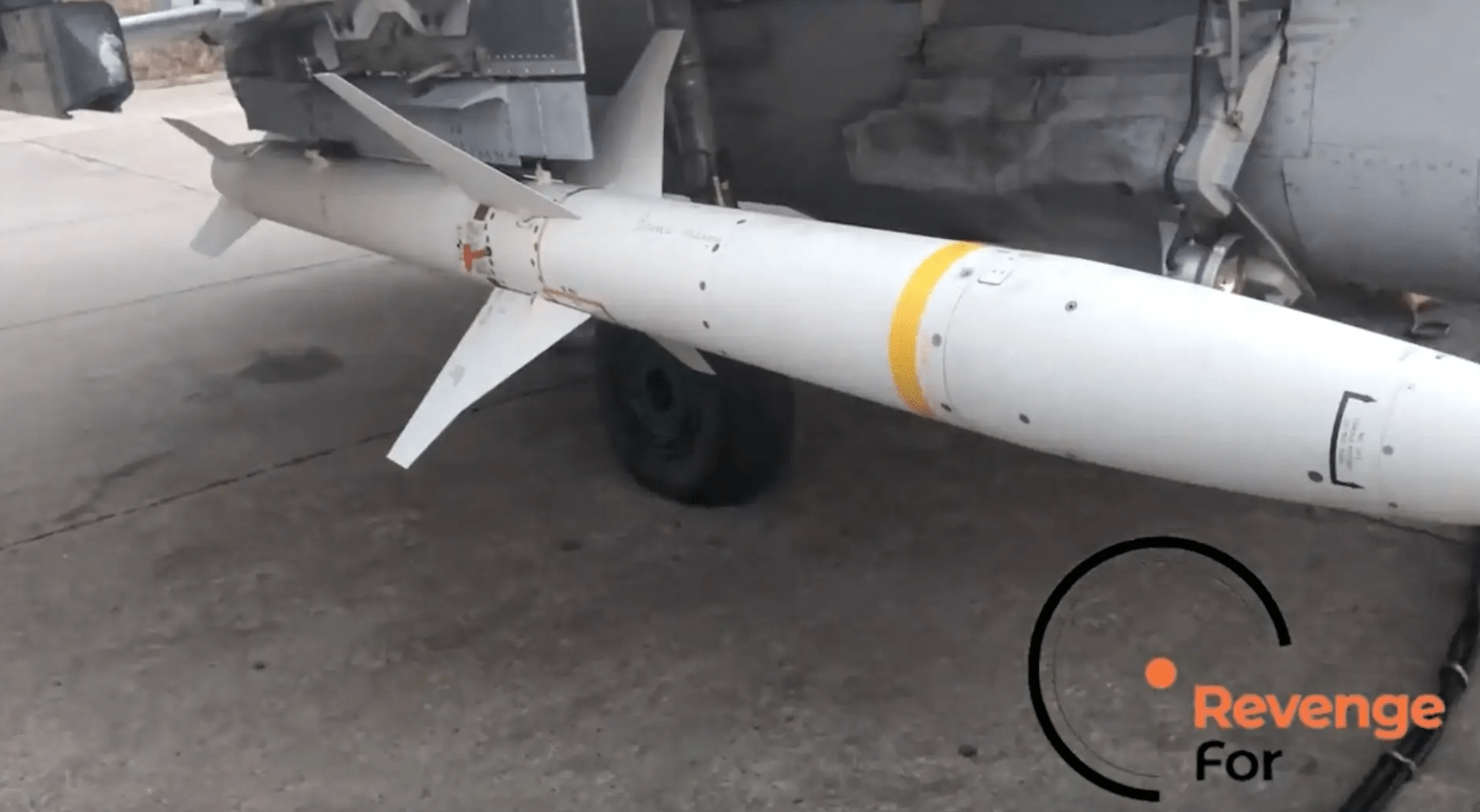
It should be noted that we have seen previous imagery of smaller, commercially available GPS devices — apparently from Garmin — installed in the cockpits of Ukrainian MiG-29s, as in the video below, which also includes HARM-shooting Fulcrums.

It is even possible that such a setup, with a pylon adapted for the weapons being employed and paired with a tablet, would not need any data bus wiring at all. The pylon could contain a hardware module that handles this with some sort of a short-range wireless device, like a Bluetooth system, that connects with the pad in the cockpit wireless. While this may be far from a traditional military-grade solution, it would make integration seamless without having to wire the aircraft specifically for these new munitions.
So, while still much is unknown about exactly how these tablets interface with the aircraft and the Western weapons they now carry, it’s clear that they play a major role in giving Ukraine’s old Soviet-era fighters a bunch of new and very deadly tricks.
Contact the author: thomas@thewarzone.com
